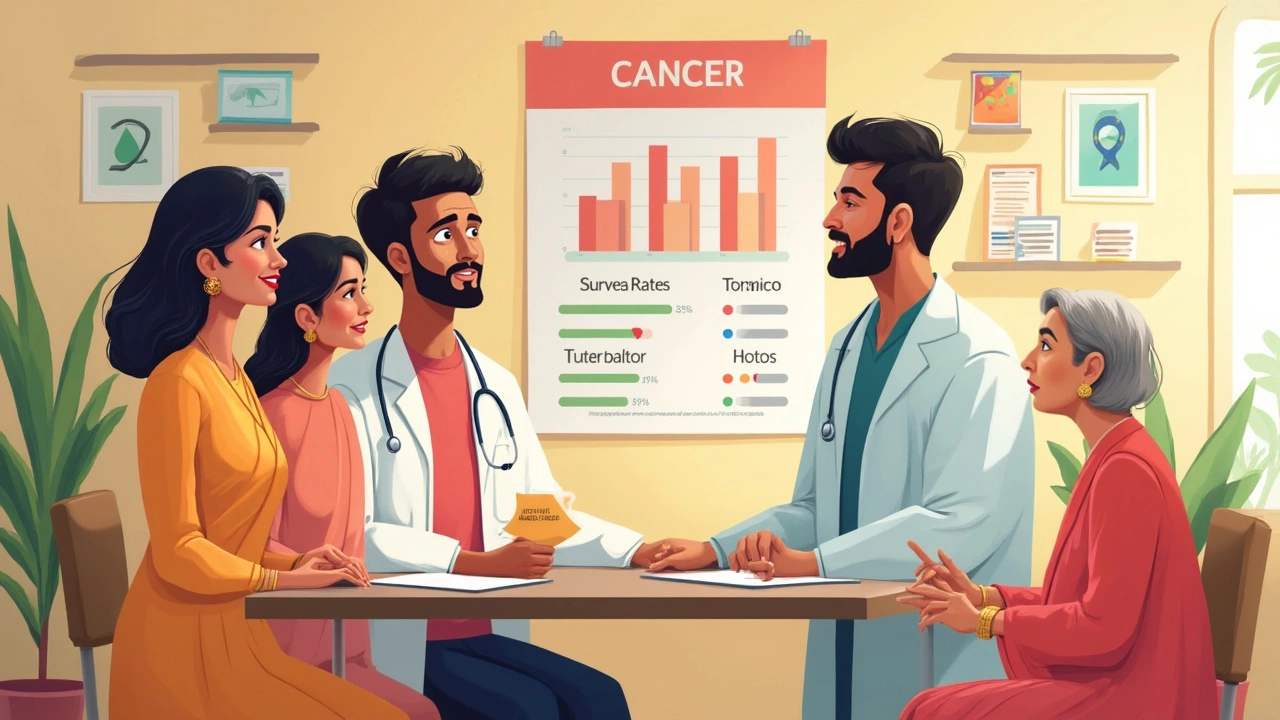Cancer Survival Rates: What They Really Mean and How to Understand Them
When you hear cancer survival rates, statistical estimates of how many people with a specific type of cancer are still alive after a certain period, often five years. Also known as five-year survival statistics, they help doctors and patients gauge how treatments are working over time. But these numbers don’t tell you what will happen to you. They’re not a prediction—they’re a snapshot of what happened to groups of people in the past. A 70% survival rate doesn’t mean you have a 70% chance of living five years. It means that, out of 100 people diagnosed with the same cancer at the same stage, about 70 were alive five years later. That’s it.
What gets missed is how much cancer prognosis, a doctor’s best estimate of how a disease will progress based on type, stage, age, and overall health depends on more than just numbers. Your body’s response to treatment, your mental resilience, access to rehab, and even how well you manage pain and fatigue all shape your journey. That’s why two people with the same diagnosis can have totally different outcomes. One might recover quickly with physiotherapy and nutrition support. Another might struggle with side effects that aren’t reflected in any statistic. And that’s where real-life stories—like those of people rebuilding strength after chemo, or learning to move again after surgery—matter more than any chart.
Then there’s cancer treatment outcomes, the measurable results of medical interventions, including tumor shrinkage, symptom relief, and quality of life improvements. These aren’t always about living longer. Sometimes, they’re about living better. A treatment that extends life by six months but leaves you too weak to walk or talk isn’t the same as one that gives you six months of pain-free days with your family. That’s why so many people focus on rehab, mobility, and mental health during and after treatment. Recovery isn’t just about the cancer being gone—it’s about getting your life back.
And let’s not forget survival statistics, aggregated data from large groups of patients used to compare treatments and track progress across populations. These are useful for researchers and policymakers, but they can scare people when taken out of context. A low survival rate for a rare cancer doesn’t mean hope is gone—it just means there’s less data. New treatments are always emerging. Physical therapy, for example, is now proven to reduce fatigue, improve mobility, and even boost immune response during treatment. These aren’t in the survival numbers, but they’re changing lives every day.
You won’t find all this in a hospital brochure. But you will find it in the stories of people who pushed through chemo with daily walks, who used breathing exercises to manage pain, or who rebuilt strength after surgery with guided rehab. That’s what this collection is for. These posts don’t give you a percentage. They give you real strategies—what works, what doesn’t, and how to take back control when the numbers feel overwhelming. Whether you’re a patient, a caregiver, or just trying to understand, what follows is the kind of help you won’t get from a statistic alone.
-
25
Curious about which cancers have the highest survival rates? Some types, like papillary thyroid cancer, have a 95% survival rate or higher, especially when caught early. This article breaks down which cancers are the most treatable, what makes them so, and what you should know about early detection. You'll also get tips on recognizing symptoms and talking to your doctor about screening. Clear, direct info—no jargon.
